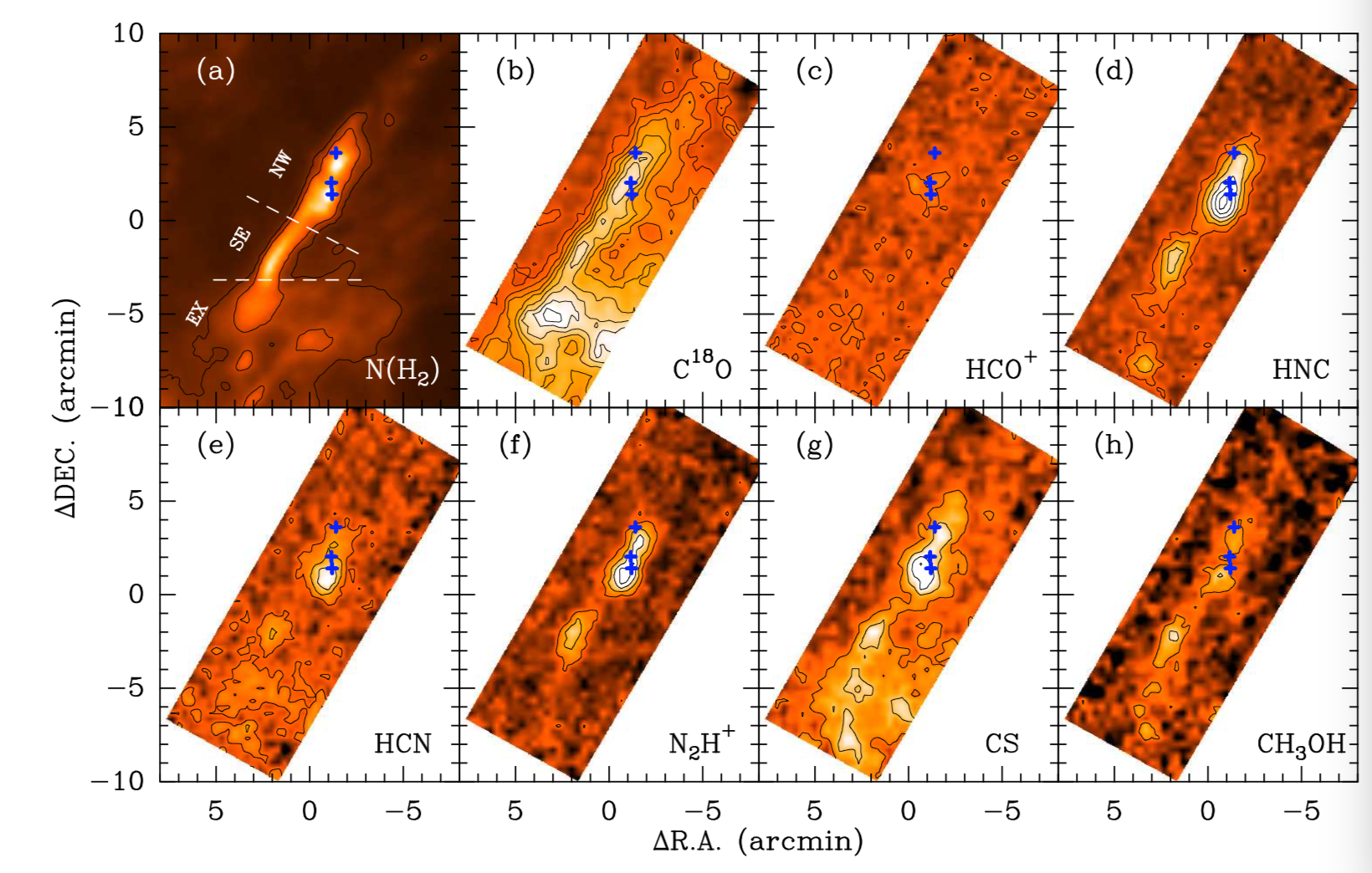The PMO-13.7m telescope discovers an initially collapsing filament
2019-01-15The Purple Mountain Observatory-13.7 m (PMO-13.7 m) telescope discovers an initially collapsing filament. This discovery was recently published in the journal “Astronomy and Astrophysics” with the title “The Serpens filament at the onset of the slightly supercritical collapse”.
Molecular clouds are nurseries of star formation. Recent observations suggest filaments are a fundamental stage in star-forming processes.Therefore, the formation and evolution of filaments are a key question to study star formation. Identifying and characterising filaments at different evolutionary stagesis of great importance to establish a self-consistent theory. Filaments at the initially collapsing phase are particularly important, because they are fossils of the filament-forming process and provide initial conditions for subsequent evolution. Molecular line observations are very suitable to study the physical and chemical properties of molecular clouds. Kinematic features like the blue-skewed profiles and velocity gradients can shed light on the initial motions (e.g., collapse) of molecular clouds.
The Serpens filament is only about 1400 light years away from us and its structure is very simple, which is beneficial to compare observations with theories. Researchers mapped this filament in seven molecular lines with the PMO-13.7 m telescope (see Figure 1). This demonstrates that the Serpens filament forms a velocity-coherent (trans- )sonic structure, a large part of which is one of the most quiescent regions in the Serpens cloud. The widespread blue-skewed HNC and CS line profilesindicate radial infall in parts of the Serpens filament, whilethe velocity and density structures indicate a longitudinal collapse parallel to the filament’s long axis. Both the radial infall rate and and the longitudinal accretion rate are lower than all previously reported values in other filaments. This supports that the Serpens filament lies at an early evolutionary stage when collapse has just begun.
This work isbased on the high-spectral-resolution spectrometers which are recently developed by the FFTS team of the PMO Qinghai station and themm- and submm-wave lab. These new spectrometers enable researchers to study (sub)sonic motions in molecular clouds. This work is funded by theNational Key Research & Development Program of China, the National Natural Science Foundation of China, and the Chinese Academy of Sciences.

By GONG Yan
Figure 1: The Serpens filament: (a) The H2 column density map. (b)-(f) , The integrated intensity maps of seven molecular lines

 Search
Search

